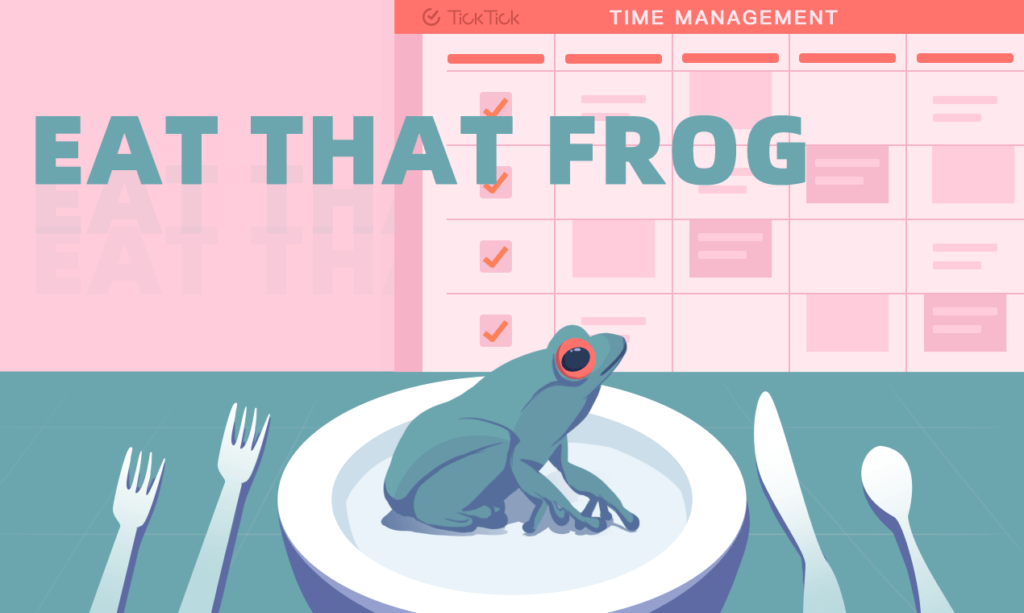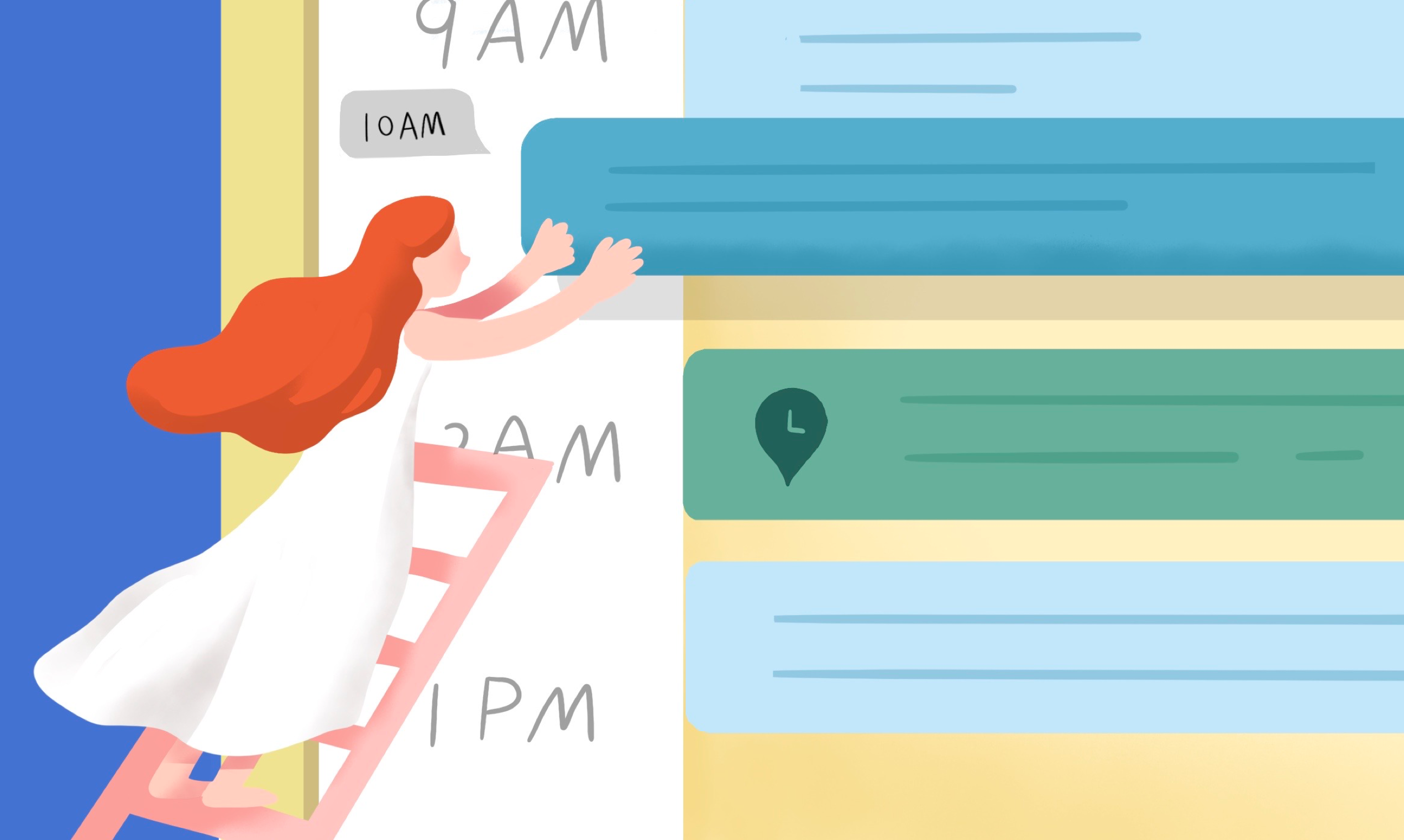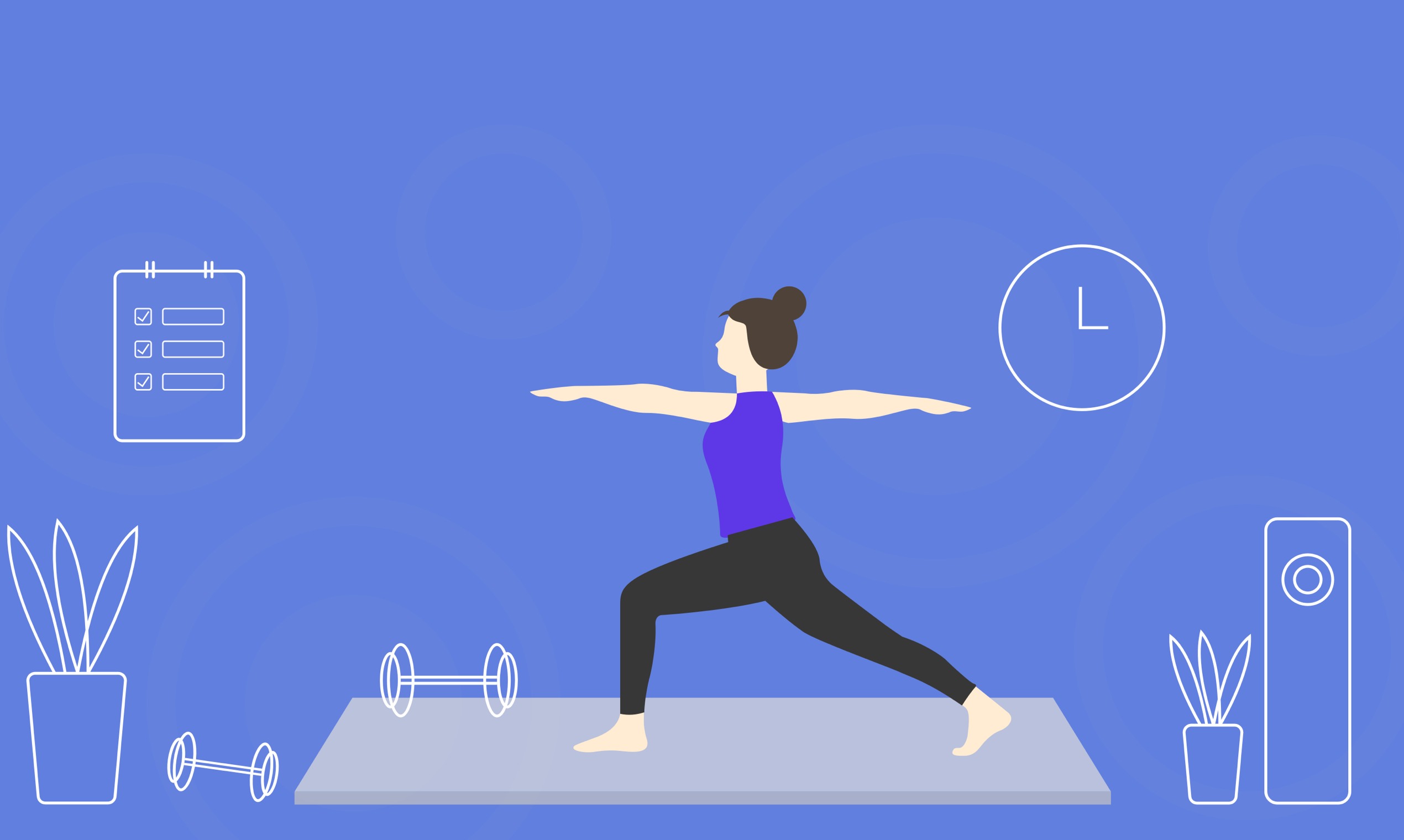
Many of us enjoy making plans, such as spending hours creating a never-ending to-do list. Similar to registering for a gym membership but never visit since then, the common reaction to a redundant list or a big commitment is usually:
- Procrastinate on it till the last minute;
- Start from small and low-value tasks to feel they are still progressing.
Maybe everyone procrastinates, and for the most of time, procrastination indeed damages our productivity and success. However, not every procrastination is deadly harmful. High performers differ from low performers by choosing the right tasks to procrastinate on. They intentionally put off those not-so-important tasks and devote themselves first to dealing with the task with the highest priority. This refers to a productivity approach called "Eat That Frog".
What does “Eat That Frog” mean?
Don’t be scared away if you first heard of this strange term, because it’s not asking you to eat a real frog. Metaphorically, “Frog” here stands for the hardest and most important task that you’re most likely to leave to the last minute. “Eat That Frog” symbolizes doing that task first thing in the morning, right on the top of your schedule. Beginning the workday from it and then persisting until the task is completed before you go on to do something else.
The origin of “Eat that Frog” is said to be attributed to a quote from Mark Twain: “If it’s your job to eat a frog, it’s best to do it first thing in the morning. And if it’s your job to eat two frogs, it’s best to eat the biggest one first.” Brian Tracey further described and developed it as a productivity method in his best-known book: Eat That Frog!: 21 Great Ways to Stop Procrastinating and Get More Done in Less Time. In his book, he has introduced 21 practical ways of how to eat that frog, bringing together other productivity practices like Time Blocking, and the Pareto principle into the discussion as well.
Advantages and limits
"Eat That Frog" seems quite understandable for its namesake, but would it be effective in the implementation? Why?
It reduces mental sufferings caused by procrastination
As mentioned earlier, choosing the right tasks to procrastinate on and invest in the top-priority task first is a pattern for high achievers and always brings about the positive side from notorious procrastination. Completing what is most important can reduce mental sufferings usually caused by reverse action.
More specifically, the guilt of not starting earlier, anxiety about the very limited time left for completing the task, fear of potential consequences, all these negative feelings come to us when a big and important task has been put off. On the contrary, if what we do is tackling that biggest difficulty from the very beginning and leaving other tasks behind, we will not be very likely to suffer from those psychological pressures. Besides, endorphins and dopamine stimulated from the achievement of a big task can also make us happier at work.
It helps enhance the focus for the whole day
By eating the frog first thing in the morning, your focus level can be enhanced for the rest of your day. This is because if you leave the most difficult task to the last, your day will be filled with worry and stress about that task, even if you’re doing something else. Carrying such bad feelings won’t allow you to focus on the task at hand. Therefore, the completion of top-priority tasks from the very start helps increase the focus level when performing other tasks.
It can boost productivity from many perspectives
Your productivity can also be boosted to a large extent from different aspects if you eat the frog in the morning. The first booster is the focus level as mentioned above. Another is the energy level. Usually, we are most energetic in the morning, when it’s the best time to perform the most skill-required tasks. Eating the frog is following this flow; thus we're more likely to perform better. Furthermore, the sense of achievement and confidence developed from successfully “eating that frog” can also keep us in momentum and good vibes that carry us into the rest of the day, which is beneficial to productivity.
It propels goal-reaching in the long run
The “frog” in another sense is the task that is closest to our final goals. According to the Pareto Principle, 20% of the actions determine 80% of the end results. That 20% is exactly the key task that can move us big steps towards our goals. Therefore, to complete it first helps us get closer to the goal. When added up, this would make the goal much easier to reach. Putting off things that are not helping with goal-reaching is a practical technique to avoid time-wasting.
Limitation
Although it sounds flawless, the problem with this method is that it might not be so flexible when it comes to the change of “frog”. In the real-life scenario, a new priority would pop up anytime and interfere with your original “frog”. Therefore, it may be beyond the capacity to eat two or more frogs at the same time and the completion of either will be influenced too. A possible solution is only keeping one frog at one time, and if there are two, one should always be of more importance.
How to eat your frog
Although "Eat That Frog" seems easy-to-execute on paper, the implementation of it needs to combine with other productivity methods such as Time Blocking and the Eisenhower matrix, to make it a digest of productivity.
Find the frog
The very first step is to find your frog. This simply means to identify which task is of the best value and needs most of your mental investment. According to the Eisenhower matrix, there are four types of tasks based on urgency and importance: urgent and important, urgent but not important, important but not urgent, neither important nor urgent. Those urgent and important tasks are the “frogs” that need to be marked as “high priority”. Be careful not to set too many high priorities, and keep the rule simple and strict, because if there are too many priorities, there is no priority.
Tip: In TickTick, when adding/editing tasks in your to-do lists, there are four Priority types you can set to a task: High, Medium, Low, and None. Find your frogs and use High Priority to pin them on the top!
Make Plans
Finding the next-day frog at the end of today’s work is always what’s suggested to do. I do that by shutting off all the windows on my browser and only leaving the one related to tomorrow’s "frog" open. This then would be the first thing I see the next morning when I come to the office and open my computer.
Another piece of advice is to always time block your tasks. As Brain Tracey said in his book, “Organize your days around large blocks of time where you can concentrate on extended periods on your most important tasks.” Arranging your tasks on TickTick Calendar and scheduling them into different time slots allows you to plan out your day well and to always stay aware of all your commitments. Make sure your "frogs" are right on the top of your daily calendar, coded by a bright color if needed.
If it’s a big frog and not possibly completed in one sitting, then it’s perhaps better to divide it first to make it several frogs for different days. To do that, the Subtask feature in TickTick can be useful, because you can break a complex task into more manageable ones, with multiple layers and priorities on them.
Time to execute on it!
When everything gets ready, there's no better time than now to jump into the start of frog-eating. Take this guide and start with your Thursday frog!
Tips: To add some spices to help you digest your "frog", you can also try:
- Pomodoro technique with White Noises
- Mindfulness practices to achieve a Flow state


